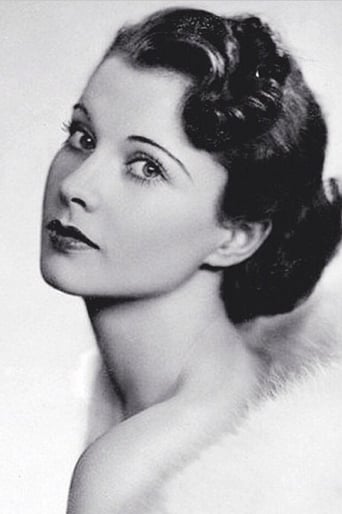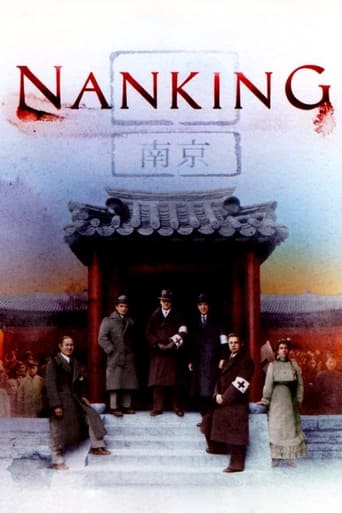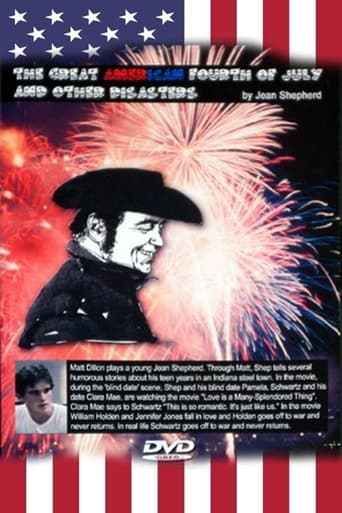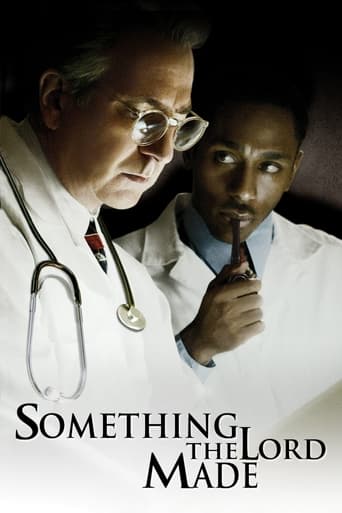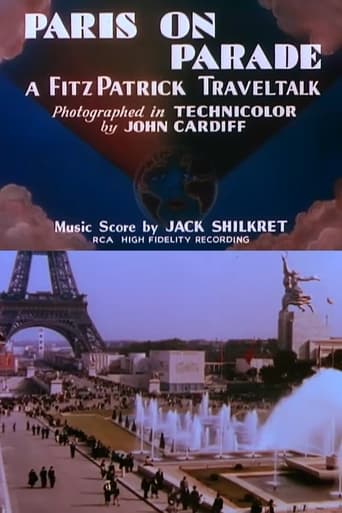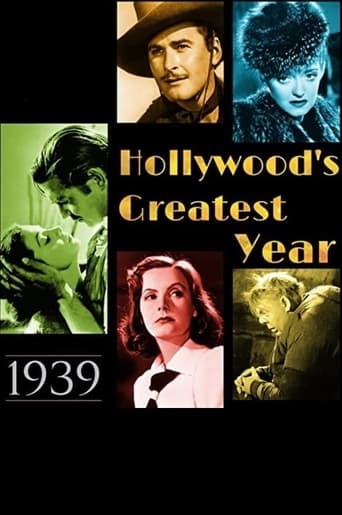
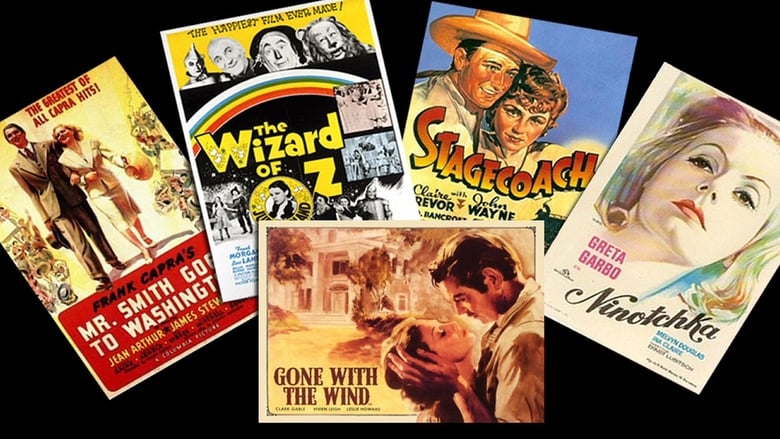
1939: Hollywood's Greatest Year (2009)
This documentary focuses on 1939, considered to be Hollywood's greatest year, with film clips and insight into what made the year so special.
Watch Trailer
Cast


Similar titles
Reviews
I really wanted to like this movie. I feel terribly cynical trashing it, and that's why I'm giving it a middling 5. Actually, I'm giving it a 5 because there were some superb performances.
A movie that not only functions as a solid scarefest but a razor-sharp satire.
The acting is good, and the firecracker script has some excellent ideas.
This is one of the best movies I’ve seen in a very long time. You have to go and see this on the big screen.
I really enjoyed this "sampler" of Hollywood's greatest hits of 1939 - a year which (as the title implies) many consider to be Hollywood's greatest. Somewhat thin and rushed in its overall feel, one nevertheless can't deny that this documentary makes a sincere effort to open the eyes of today's movie lovers to a bygone era of Hollywood greatness.The deficiency of this documentary can best be explained very simply: Not enough time! That is to say, the subject matter is really too vast to be condensed neatly into a 75-minute documentary with any expectation that it will reveal enough facts, figures, anecdotes, history and lore of late-30's Hollywood to even begin to satisfy the more serious film buff. So in effect, the documentary comes across more as a compilation of trailers and previews of all those great films of 1939, rather than any sort of serious history lesson.The viewer nevertheless does get a sense of the historical "place" of 1939 Hollywood: it is made apparent that the preceding 8 or 9 years of hard economic times, i.e. The Great Depression, culminated in an end-of-decade perfect storm of masterful film productions. Whether this is cause and effect or something else entirely, is left up to the viewer to decide. Also, one can see that 1939 was a transitional year on a global scale, what with war clouds looming on the horizon, which indubitably cast long shadows into the movie studios of the time. Further, there were some interesting comments about the manner by which major Hollywood studios controlled not only production of their films, but distribution as well (in the form of wholly-owned theater chains), leading to members of U.S. Congress leveling charges of monopoly tactics.I wish there would have been a lot more to this documentary, but I also wonder, how much could they really do with 75 minutes? At what point did they decide to "draw the line," and leave much of the historical context on the cutting room floor, and simply concentrate more on showcasing the finished product - i.e. the films themselves? I think in that regard they did the right thing. As I noted above, the subject matter is too vast for a 75-minute documentary.As a movie lover, and as someone who enjoys exploring movies from the bygone era of Hollywood, I commend this documentary for allowing me to see some of my favorites - Ninotchka, Gone With The Wind, Gunga Din, Stagecoach, etc. - in a new light. In addition, I thank this work for showing some snippets of movies that I have not yet seen, but really must check out: Midnight, Dodge City, The Women, Confessions of a Nazi Spy, etc. If nothing else, I would highly recommend this documentary to anyone interested in getting some "movie night" ideas. Hopefully there is a video store near you that carries many of these movie titles from 1939, "Hollywood's Greatest Year."
A barely adequate look at the golden year of 1939, concentrating, as usual, on films owned by TCM and ignoring films they don't own and studios whose libraries they don't have.Turner not only does this in its documentaries but also in their books.I certainly can understand them wanting to push the stars and films they own, but please don't call this film history. Though TCM was not listed as the producer, they in fact were - they farmed it out to New Wave Entertainment, which has made many of their documentaries.Most slighted, as usual, was 20th Century Fox - I'll say this, they did mention it. Usually they leave it out all together. Tyrone Power in 1939 was one of the most popular stars in the world, in the top 10 box office stars - lucky him, they mentioned him once. Amazing.The documentary said that Gone with the Wind "swept" the Oscars, failing to mention that "The Rains Came" beat it - and the Wizard of Oz - in special effects.As usual, people watching this walk away believing the only stars were Clark Gable, Greta Garbo, Mickey Rooney, Bette Davis, Errol Flynn, etc. and the rest of them were people who did some acting on the side. After all, if you weren't with MGM, Warners, or RKO, you were nobody.
1939: Hollywood's Greatest Year (2009) *** 1/2 (out of 4) Extremely entertaining documentary from Warner takes a look at 1939, which many film buffs and historians consider the greatest year for movies. The documentary has Kenneth Branagh doing the narration and features interviews with Leonard Maltin, Rudy Behlmer and many others as they look over the countless great films released that year. They break the movies down by studios and is pretty level in regards to all of them with the exception of Universal and Paramount. No clips from either of those studios are shown and the movies themselves get very little mention, although Maltin does mention SON OF FRANKENSTEIN. The spotlight is certainly on MGM as they released the two monsters in GONE WITH THE WIND as well as THE WIZARD OF OZ. We also take a look at the work done by John Ford with YOUNG MR. LINCOLN, DRUMS ALONG THE MOHAWK and STAGECOACH. Capra and MR. SMITH GOES TO WASHINGTON is also a favorite here as are discussion of NINOTCHKA, OF MICE AND MEN, GUNGA DIN, DODGE CITY, THE ROARING TWENTIES and countless other gems. The documentary does a great job at introducing these films to those who might not be familiar with them or the legend of 1939 but I think the one weak spot is that there's never really any talk of why the studios were pumping out so many great movies in this one year. There's a brief mention of coming out of the Depression and going for it all but more discussion here would have been a plus. Coming in at just under 70-minutes, the documentary is a good introduction to these films.
Narrated by KENNETH BRANAGH, I'd give this one even higher points if the narration included even more key points when discussing actors like Errol Flynn. Scant mention is made of his famous co-star Olivia de Havilland and certainly the fact that they became a great screen team after their first film in 1935 (CAPTAIN BLOOD). Instead we get a brief glimpse of Olivia (a covered wagon close-up from DODGE CITY) and one brief scene arguing with Flynn. Anyone would think their screen team magic in eight films wasn't worth a mention. Indeed, all of his best films were with Olivia at his side.I could mention a few other omissions, but you get the drift. As always in these sort of tributes to studios and stars, there are some that really needed to be pointed out. Spending so much time on STAGECOACH when honoring John Ford westerns without a single scene from his other '39 masterpiece, DRUMS ALONG THE MOHAWK, is an oversight hard to forgive--especially since the narration mentions the stunning new use in '39 of a little thing called Technicolor.The films and stars that get the most attention are NINOTCHKA (because of Garbo), the Bette Davis era at Warner Brothers, the Cagney/Raft gangster films, and the most unusual Warner melodrama that dealt with the Nazis--CONFESSIONS OF A NAZI SPY.At Paramount, we get brief mention of Cecil B. DeMille and Claudette Colbert.At Fox, it's Darryl F. Zanuck and director John Ford's talent for making westerns but still no mention of DRUMS ALONG THE MOHAWK. Instead, it's the Tyrone Power film JESSE JAMES that's called the most popular western of the year and given the full Technicolor treatment.Then a brief look at United Artists which was formed back in the '30s by icons like Chaplin, Fairbanks and Pickford--and how independent producers like Walter Wanger and Hal Roach found a niche and made some great films. A clip from OF MICE AND MEN shows a tense scene between Lon Chaney, Jr. and Betty Field.At RKO, it's GUNGA DIN directed by George Stevens that cost the most to make and proved highly successful at the box-office. The other biggie is THE HUNCHBACK OF NOTRE DAME and Maureen O'Hara tells how awestruck she was by the masterful sets recreated entirely on a sound stage. The narration mentions that both of these films had underlying significance for audiences at that time--freedom from oppression being the theme in a world on the brink of war.A brief clip of Fred and Ginger from THE STORY OF VERNON AND IRENE CASTLE, and a love scene from LOVE AFFAIR are shown for the conclusion of the RKO segment.Then it's on to Selznick's independent feature GONE WITH THE WIND and all the obstacles in the producer's path before the film was finally made and declared an outstanding success.As noted before, it's the omissions that will grate on some people--but all in all a good treatment of Hollywood's most incredibly creative year under the studio system.




